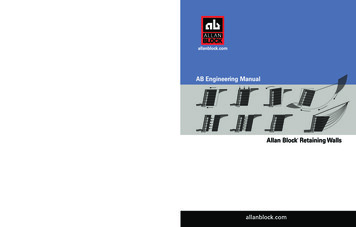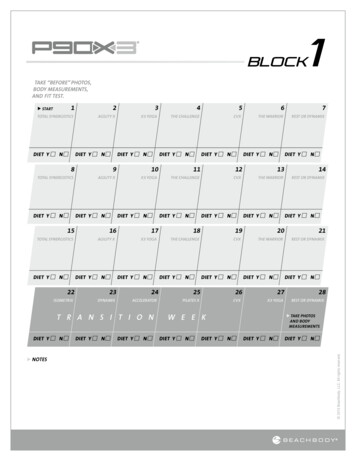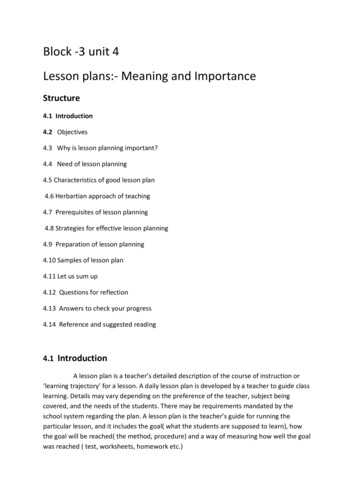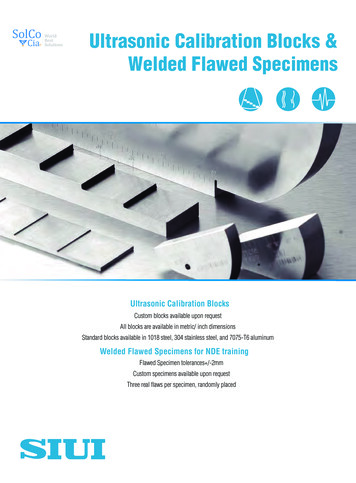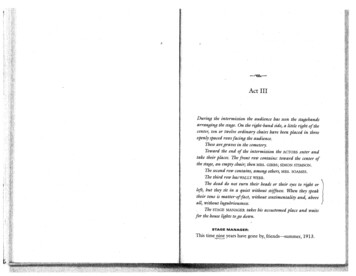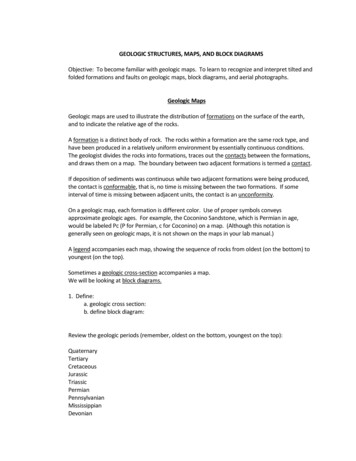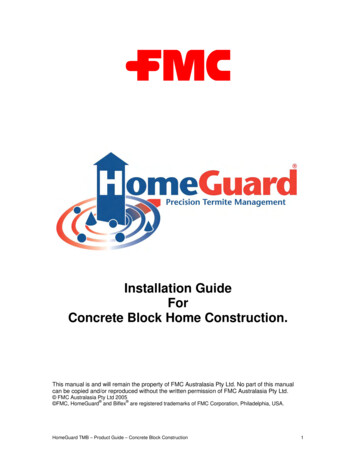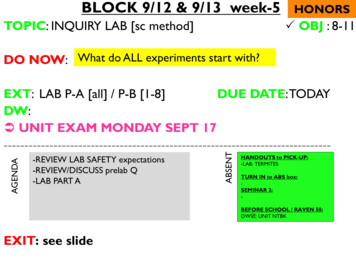
Transcription
BLOCK 9/12 & 9/13 week-5TOPIC: INQUIRY LAB [sc method]HONORS OBJ : 8-11DO NOW: What do ALL experiments start with?-REVIEW LAB SAFETY expectations-REVIEW/DISCUSS prelab Q-LAB PART AABSENTAGENDAEXT: LAB P-A [all] / P-B [1-8]DUE DATE: TODAYDW: UNIT EXAM MONDAY SEPT ------------------------------HANDOUTS to PICK-UP:-LAB: TERMITESTURN IN to ABS box:SEMINAR 2:BEFORE SCHOOL / RAVEN 50:DW : UNIT NTBKEXIT: see slide
BLOCKPEER #Write this inRED PENUNIT 1 NTBKRED X in BOXDW GRADE: 2 1.5 1 0
DW 2 -GRADE RUBRIC-WHAT IS EXPECTED-100% COMPLETION with EFFORT-UNIT NTBK ORGANIZED/STAPLED [front pocket]-DAILY WORK section EMPTY in NTBK-BK PGS / OBJ filed in SEM FINAL section [front pocket] 1-NOT QUITE WHAT IS EXPECTED-50-99% COMPLETION with EFFORT-UNIT NTBK ORGANIZED/STAPLED 0-NOT WHAT IS EXPECTED- 50% COMPLETED
CLASS RESOURCES
CLASS RESOURCES
CLASS RESOURCES
LAB: TERMITESLEARNING OBJECTIVE:-Put in practice the SCIENTIFIC METHOD / INQUIRY PROCESS-INVESTIGATE terminates (behavior, communication, and pheromones)-Make COMPREHENSIVE observations to help you design anexperimentINQUIRY CHALLENGE/QUESTION(s):How do TERMITES navigate in their environment?
BACKGROUNDTermites are insects that build large colonies eitherunderground (subterranean termites) or inside wood(drywood termites). Most termites eat dead wood, althoughsome species feed on living trees. Termites are able to digestcertain plant fibers found in wood with the help of protiststhat live in the termites’ digestive system. The protistsproduce a chemical that breaks down plant fibers intocompounds the termites can absorb.The termites you will observe in this investigation are workertermites, one of several types, or castes, of termites that makeup a subterranean termite colony. Each caste carries outspecific jobs in the colony.
BACKGROUND
TERMITES PRE-LAB-EXAMINE the termite nest shown below.-IDENTIFY:-the queen, king, soldier termites, worker termites, and winged termites.KingWingedQueenWorkerSoldier
PRE-LAB QUESTIONS-Build tunnels, chambers, search for food, feed other termites-Queens and Kings-No- live underground their whole lives-Yes- need to be able to see in dark-Barriers (change direction) –test ifattracted to light-observeattracted to strong smells-Use a scent (perfume, etc.)-Do not reproduce –must travel from nest in search of food –navigate intheir environment
COLLABORATION ROLES1-FACILITATOR / TIMEKEEPER keep group ON TASK / FOCUSED takes care of TIME MANAGEMENT makes sure ALL VOICES in group are HEARD2-SPOKESPERSON [LANYARD] COMMUNICATES group QUESTIONS/CLARIFICATIONS w/ INSTRUCTOR ENSURES ALL MEMBERS have had the OPPORTUNITY to RESPOND before asking ? ENSURES that EVERYONE in group AGREES on WHAT QUESTION to ask PRESENTS CONCLUSIONS of the group to the class, as requested3-SCRIBE [ANSWER KEY- lead discussion of GRADING/REV] TEAM NOTE-TAKER / TEAM “GRADER” LEADS team in REVISIONS4-QUALITY CONTROL / CHECKER GUIDES consensus-building process: group must AGREE on RESPONSES VERIFIES that ALL individual responses are CONSISTANT ENSURES that ACCURATE REVISIONS happen during/after class discussions5-MATERIAL SET-UP / CLEAN-UP
PROCEDURE PART A[3] INTRODUCE /ORGANIZE TEAM/GATHER MATERIALS-2 termites per group [I will BRING YOUR termites to you!]-IDENTIFY ROLE / REVIEW responsibilities[12] OBSERVATIONS / TESTING INK TRAILPart A: Observing Termite Behavior / Testing an ink trail1-Draw a circle on the ½ sheet of white paper.2- Use a brush to transfer a termite from the culture jar into a Petridish containing dampened filter paper.3-Transfer the termite from the Petri dish to the circle. [PAINTBRUSH]4-Observe the termite’s behavior for 2–3 minutes and recordobservations / Questions below.[Return the termite to the Petri dish between trials]5-Consider the list of behavior questions below. [ANSWER][2] CLEAN-UP / SET-UP-RETURN THE TERMITE TO THE ORIGINAL CULTURE JAR AS SOON AS POSSIBLE.-ALL SUPLIES in original SET-UP
5-Consider the list of behavior questions below.-What type of pencil, ink, paper or other item acts as a pheromone mimic?-Does the color of the pencil or ink line affect the termite’s behavior?-Does the thickness of the pencil or ink line affect the termite’s behavior?-Does the space between markings affect the termite’s behavior?-Does the time between making marks and starting the experimental trialaffect the termite’s behavior?
PROCEDURE PART B: Steps 6-7[20] Design an Experiment [each member should complete as a rough draft]6-Develop a question and a hypotheses based on your observations[this will be included in your data].Q- FOLLOW THE FORMATH- FOLLOW THE FORMATWhat are your variables?IV- ( )DV- ( )What will be your control? -What will be your constants? - - -How many times will you repeat this experiment [# of trials]?7-Determine what data you will collect and create a data table.[construct data table under Q#9]-You will need to construct a graph from your data. Data must be QUANTITATIVE for graphing.8-Develop a procedure so you can test your hypotheses.[Be DETAILED!]
EXITCIRCLE-level of understanding of today’s objectiveA/BC D/FQ’s / clarificationsEXIT- Determine if you NEED to ATTEND R50 to finishthrough STEP 8
Sep 09, 2018 · Part A: Observing Termite Behavior / Testing an ink trail 1-Draw a circle on the ½ sheet of white paper. 2- Use a brush to transfer a termite from the culture jar into a Petri dish containing dampened filter paper. 3-Transfer the termite from the Petri dish to the circle. [PAINTBRUSH] 4-Observe the termite
